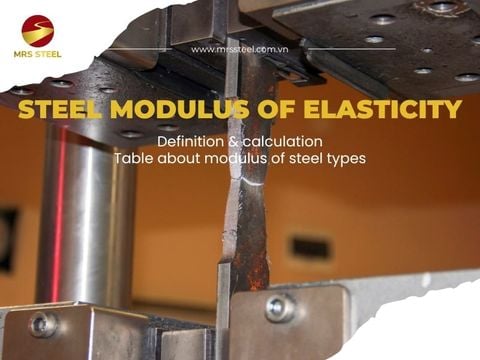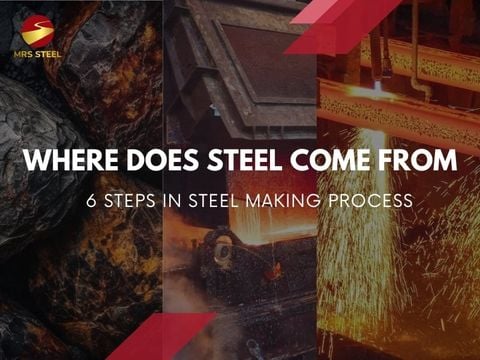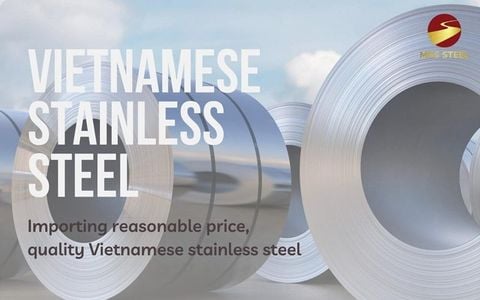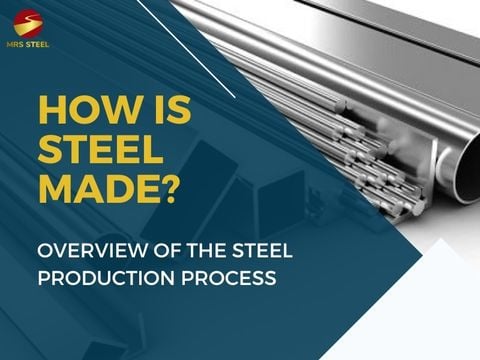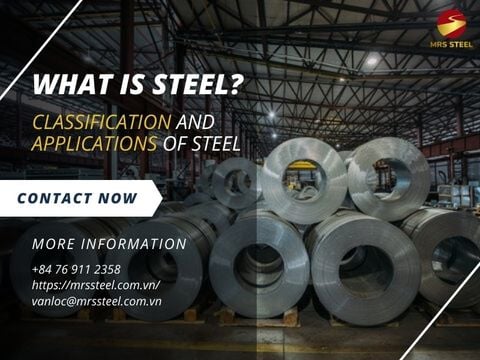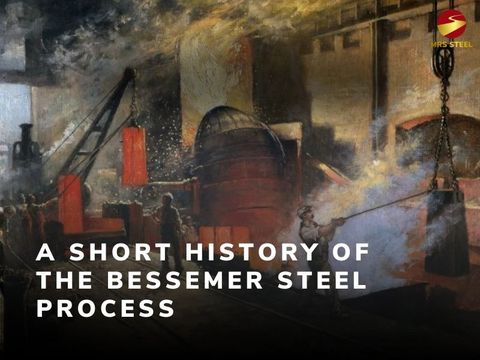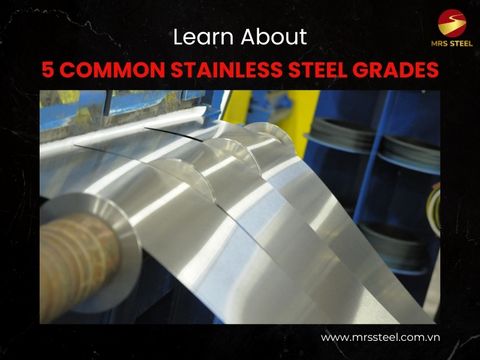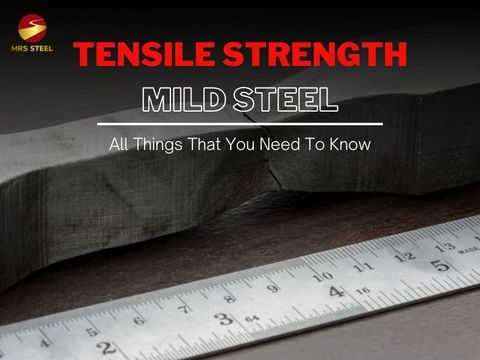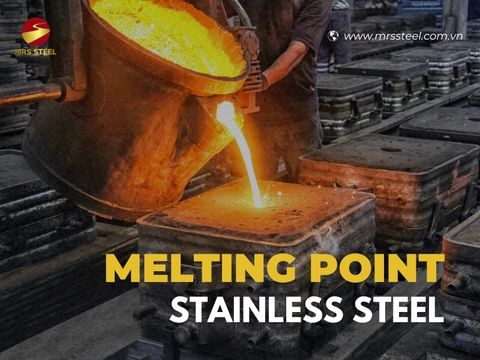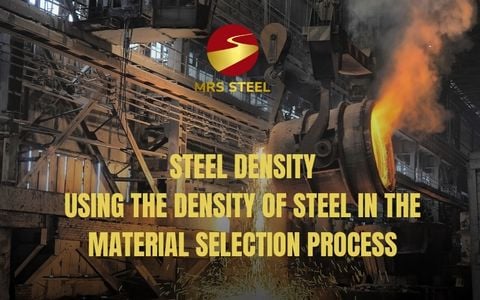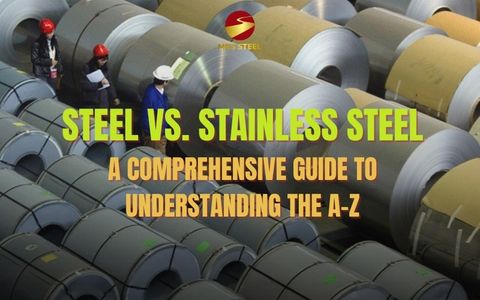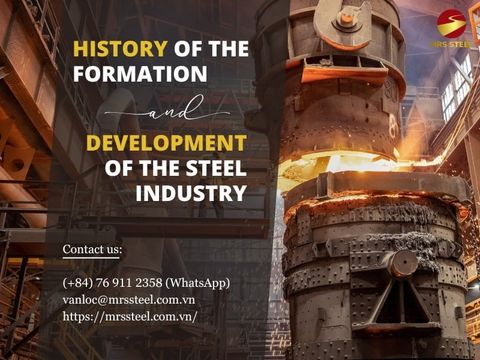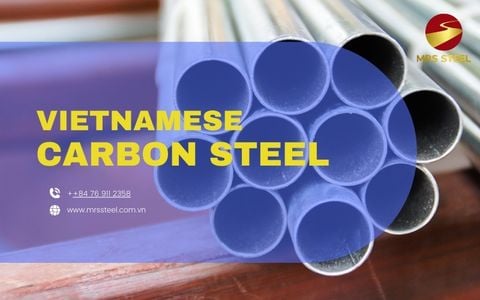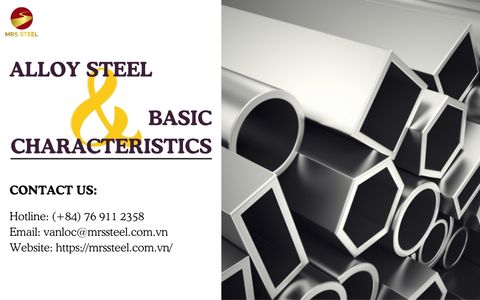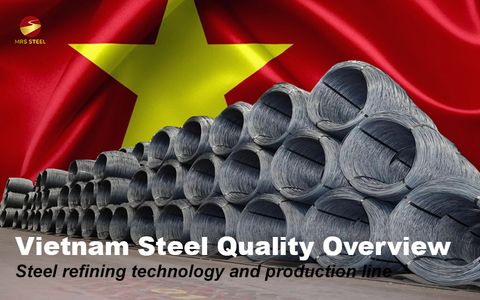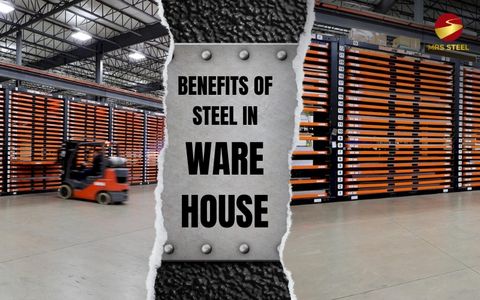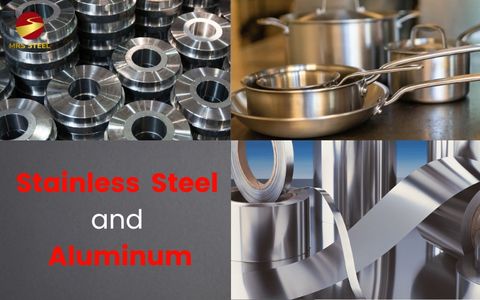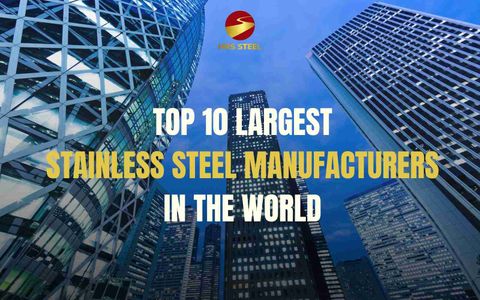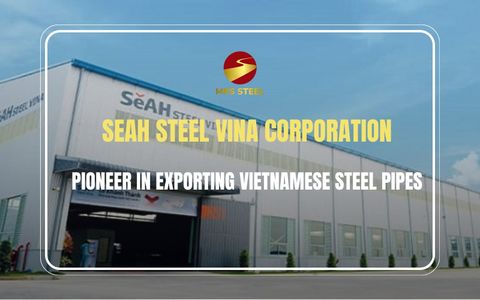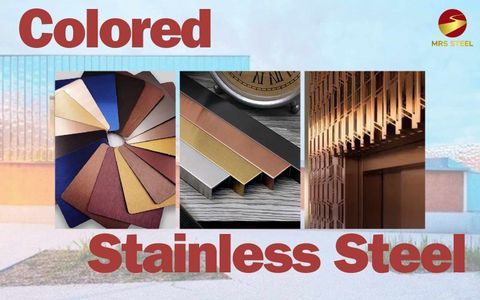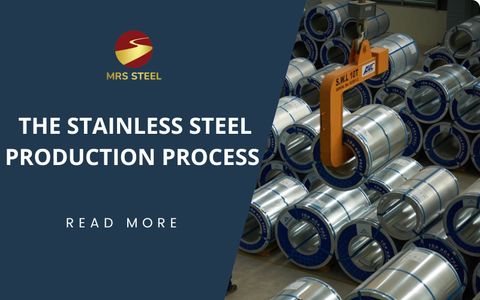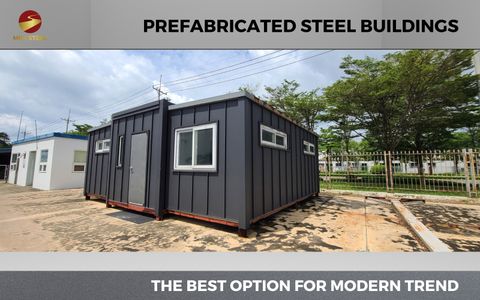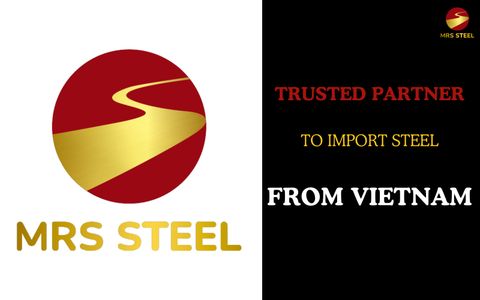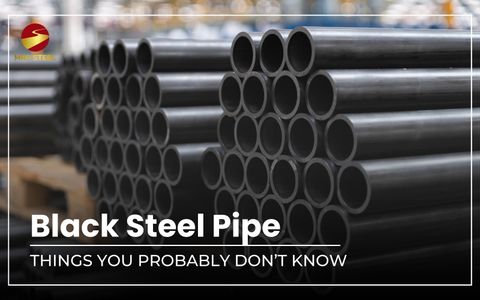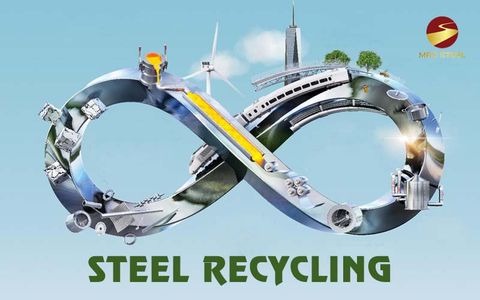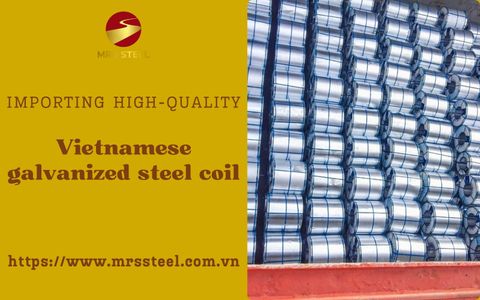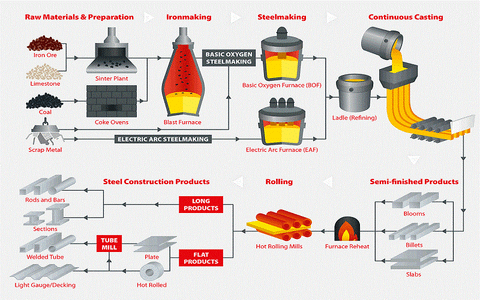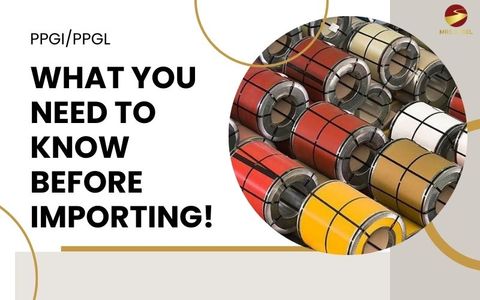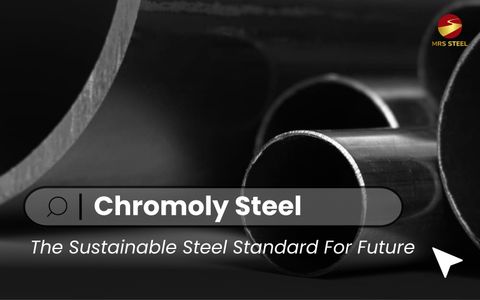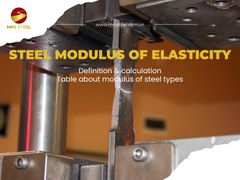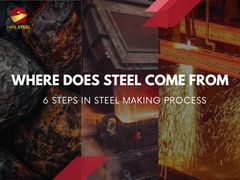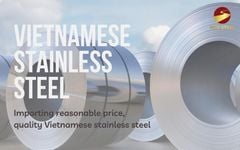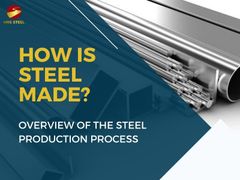What are steel grades? A chart of common steel grades in construction
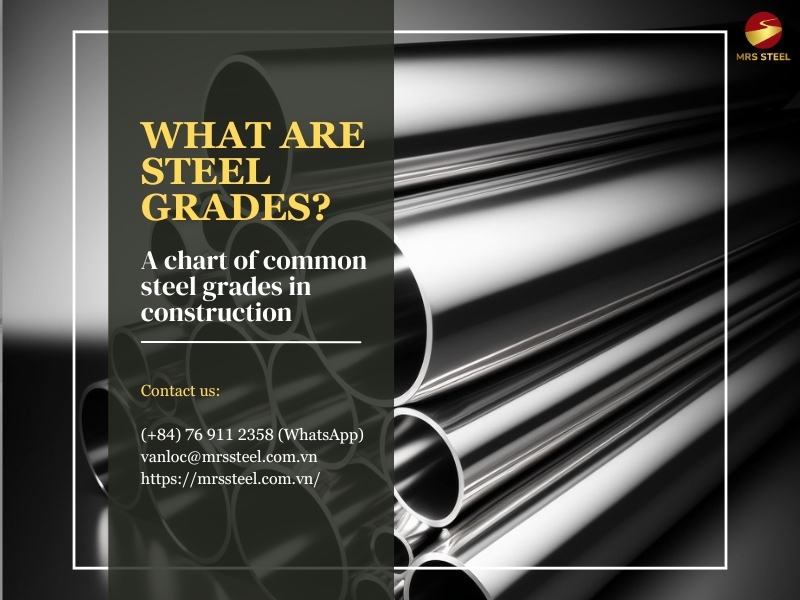
BlogDate: 30-04-2024 by: Nhu Quynh
Each type of steel produced is labeled with a steel label. However, on the market today, there are too many steel grades, and they can easily confuse consumers when choosing.
So what are steel grades? Why is it necessary to attach steel labels to construction steel materials? How many types of steel are being used on the market? Follow the article with MRS Steel to learn more about what steel grades!
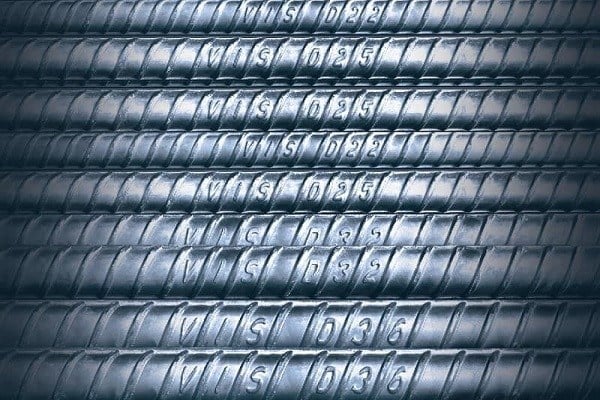
The most commonly used steel grades today compressed
Learn about steel grades
What are steel grades?
In construction materials, we will often see specialized terminology and symbols printed on steel. That is the steel grades; the main meaning is to fully express the bearing strength of each different type of steel. It indicates whether the steel product has the ability to withstand large or small forces.
Steel grades are often denoted by a letter and one or two numbers, in which the letters represent the main chemical composition of the steel and the numbers represent the tensile strength of the steel.
For engineers specializing in construction or agents and distributors of construction materials, it is very easy to recognize different steel grade types. As well as understanding the steel marking symbols of each material line better than ordinary consumers.
So what is the category of steel grades? Continue reading below to understand more information about steel grades!
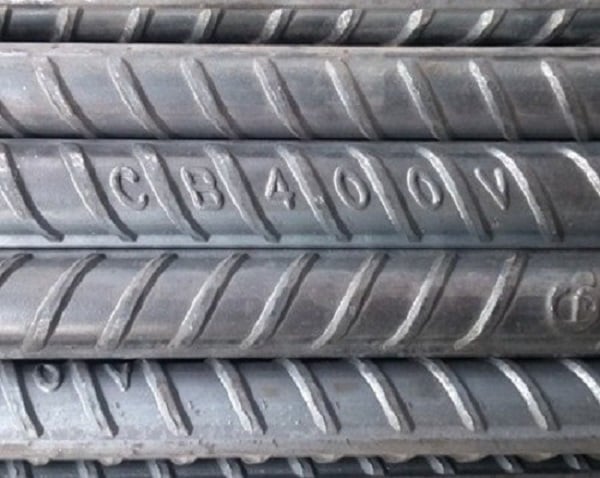
Symbol of carbon steel grades
Classification of steel grades
- First, they can be classified according to their chemical composition, including the content of carbon and other alloying elements. For example, there are types such as carbon steel, alloy steel, stainless steel, and tool steel.
- Second, the classification of steel grades can be based on the finishing method, such as hot-rolled coil, cold-rolled coil,...
- Third, it can also be classified based on the production method, including types such as production by EAF furnace, BOF furnace,..
- Fourth, crystal structure is also an important criterion when determining steel grades, with types such as ferritic steel, perlite steel, and martensite steel.
- Finally, mechanical strength also plays an important role in steel grade classification, with properties such as tensile strength, yield strength, elongation, curvature, and weld strength being closely considered.
Standards for steel grades and how to read steel grades
Standards for steel grades
Steel grade production also requires its own standards, with each production standard having different steel grade types. Below, MRS Steel would like to share some popular standards for steel grades on the market today.
Steel grade according to Vietnamese standards - TCVN
TCVN is the most commonly applied standard in the steel manufacturing industry. Among them, there are 4 common standards: TCVN 1651-1:2008, TCVN 1811_2009 (ISO 14284-1996), TCVN 6287_1997, and TCVN 7937-1-2013. For each different type of steel, there will be different standards, specifically:
TCVN 1651-1:2018 for plain round steel bar
TCVN 1651-2:2018 for rebar steel
TCVN 1651-3:2008 for welded wire mesh rolls and panels
TCVN 1811:2009 for steel and cast iron
TCVN 6287:1997 for steel bars for concrete reinforcement
TCVN 7937-1:2013 for steel for prestressed concrete reinforcement
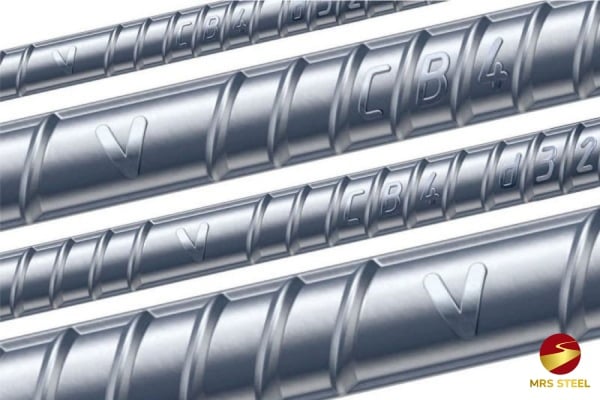
VNSteel's steel is produced according to TCVN standards
Steel grade according to Japanese standards - JIS
JIS stands for Japanese Industrial Standards. This standard was developed by the Japan Standards Federation. Besides the 5S standards, JIS represents professionalism in manufacturing and production. It has contributed in no small part to the most reliable and prestigious international standard system today.
The general symbol of JIS Japanese standard products is JIS Gxxxx. In particular, JIS is the symbol name of the JIS industrial standard. G is the letter representing the steel industry, xxxx is the symbol for each specific item.
Steel grade according to Russian standards
Also similar to Vietnamese standards in designation, steel grades in Russian standards are abbreviated as CT, followed by numbers from 0 to 6. These numbers represent the chemical and mechanical properties of the steel. When the number of symbols is large, it shows that the proportion of carbon in the alloy is higher, and therefore the strength of the steel is greater. For low-carbon steel, less than 0.15%, it will be denoted CT0.
To classify steel grades according to Russian standards. The corresponding numbers are often found at the end of the steel grade. Level 1 is not recorded. In front of the steel grade, write the corresponding steel groups A, B, and C.
Steel grade according to American standards - ASTM
In American standards, the process of coding and determining the properties of metal materials is extremely strict, especially steel. This standard, which requires the use of many complex steel grading systems, makes an important contribution to defining their quality and application in many industrial sectors.
ASTM is a standard issued by the American Society for Testing and Materials. It is considered a tool to evaluate, specify, and classify the chemical, mechanical, and metallurgical properties of each type of steel. The scope of application is in the production of mechanical parts, industrial parts, construction elements, and accessories related to them.
Steel labeled with the ASTM standard means that the steel meets exactly the criteria specified in the standard. Some popular ASTM steel grades today are: A29, A27, A36, A53, A304, A355, A392, A400, A575, A689, A914, and A920.

Hoa Phat's construction steel grade symbol
How to read steel grades
You already understand the symbols of steel grades, so how to read steel grades can also be found below.
Steel round bar
For round steel, steel grades are often denoted with both letters and numbers. Lowercase letters represent typical symbols of national standards, and the numbers behind them represent the bearing strength of the steel. This notation depends on the standards of the factory that produced the steel.
If that factory uses Japanese standards for production, it will be denoted SD, in which S stands for steel and D stands for deform. If using a mark according to Vietnamese standards for production, the symbol is CB, with C standing for durability level, and B is the symbol of the steel group. If that factory uses standards from the US or Europe, the symbol is usually grade, where grade means type.
For steel plates, shaped steel and steel hollow section
For this type of steel, there will usually be no symbols on the steel product. That steel grade will come with paperwork, or we will have to cut a sample for testing to know how much that steel grade is worth.
In particular, steel hollow sections are one of the most commonly used steel materials today. Therefore, memorizing steel grades is one of the most accurate and effective ways to choose steel hollow sections for you. This will help your purchasing and use of construction steel be effective and of the best quality.
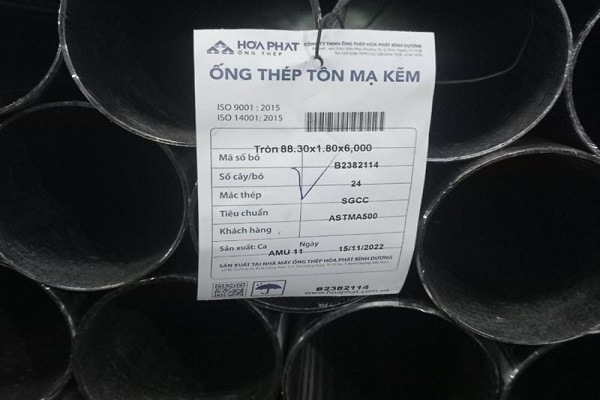
Galvanized steel pipes often have steel grades printed on the stamp of the steel bundle
A chart of steel grades commonly used today
Depending on different types of construction projects, different grades of steel chart will be used. Mastering the types of steel and steel grades helps owners save time and effort in the selection stage. Below are the current popular construction grades of steel charts you can use to apply to your project.
Steel bars for concrete reinforcement | ||||||
Standard |
Grade | Chemical Composition | ||||
C | Si | Mn | P (max) | S (max) | ||
TCVN 1651 - 85 (1765 - 85) | CT33 | 0.06-0.12 | 0.12-0.30 | 0.25-0.50 | 0.04 | 0.045 |
CT34 | 0.09-0.15 | 0.12-0.30 | 0.25-0.50 | 0.04 | 0.045 | |
CT38 | 0.14-0.22 | 0.12-0.30 | 0.40-0.65 | 0.04 | 0.045 | |
CT42 | 0.18-0.27 | 0.12-0.30 | 0.40-0.70 | 0.04 | 0.045 | |
CT51 | 0.28-0.37 | 0.15-0.35 | 0.50-0.80 | 0.04 | 0.045 | |
TCVN 3104 - 79 | 25Mn2Si | 0.20-0.29 | 0.60-0.90 | 1.20-1.60 | 0.04 | 0.045 |
35MnSi | 0.30-0.37 | 0.60-0.80 | 0.80-1.20 | 0.04 | 0.045 | |
JIS G3505 2004 | SWRW10 | 0.13 max | 0.30 max | 0.06 max | 0.04 | 0.04 |
SWRW12 | 0.15 max | 0.30 max | 0.065 max | 0.04 | 0.04 | |
JISG 3112 | SD 295A |
|
|
| 0.05 | 0.05 |
SD 345 | 0.27 max | 0.55 max | 1.60 max | 0.04 | 0.04 | |
SD 390 | 0.29 max | 0.55 max | 1.80 max | 0.04 | 0.04 | |
SD 490 | 0.32 max | 0.55 max | 1.80 max | 0.004 | 0.004 | |
ASTM A615/A615M - 94 | Gr 40 | 0.21 max | 0.40 max | 0.35 max | 0.04 | 0.05 |
Gr 60 | 0.30 max | 0.50 max | 0.50 max | 0.04 | 0.05 | |
BS 4449 | Gr 250 | 0.25 max | 0.50 max | 1.50 max | 0.06 | 0.06 |
Gr 460 | 0.25 max | 0.50 max | 1.50 max | 0.05 | 0.05 | |
ГOCТ 5780 - 82 | 25Г2C | 0.20-0.29 | 0.60-0.90 | 1.20-1.60 | 0.04 | 0.045 |
35ГC | 0.30-0.37 | 0.60-0.80 | 0.80-1.20 | 0.04 | 0.045 | |
ГOCТ 380 - 71 | CΤ2 | 0.09-0.15 | 0.12-0.30 | 0.25-0.05 | 0.045 | 0.045 |
CΤ3 | 0.14-0.22 | 0.12-0.30 | 0.40-0.60 | 0.045 | 0.045 | |
CΤ4 | 0.18-0.27 | 0.12-0.30 | 0.40-0.70 | 0.045 | 0.045 | |
CΤ5 | 0.29-0.37 | 0.15-0.35 | 0.50-0.80 | 0.045 | 0.045 | |
| ||||||
Rolled steel for general structure | ||||||
TCVN 1765 - 85 (1765 - 85 ) | CT33 | 0.06 - 0.12 | 0.12 - 0.30 | 0.25 - 0.50 | 0.04 | 0.045 |
CT34 | 0.09 - 0.15 | 0.12 - 0.30 | 0.25 - 0.50 | 0.04 | 0.045 | |
CT38 | 0.14 - 0.22 | 0.12 - 0.30 | 0.40 - 0.65 | 0.04 | 0.045 | |
CT42 | 0.18 - 0.27 | 0.12 - 0.30 | 0.40 - 0.70 | 0.04 | 0.045 | |
CT51 | 0.28 - 0.37 | 0.15 - 0.35 | 0.50 - 0.80 | 0.04 | 0.045 | |
JIS 3101 1995 | SS 330 |
|
|
| 0.05 | 0.05 |
SS 400 | 0.20 max | 0.55 max | 1.60 max | 0.05 | 0.05 | |
SS 490 |
|
|
| 0.05 | 0.05 | |
SS 540 | 0.30 max |
| 1.60 max | 0.04 | 0.04 | |
JIS G3106 1995
| SM400 A | 0.23 max | - | 2.5xC min | 0.035 | 0.035 |
SM400 B | 0.20 max | 0.35 | 0.60-1.40 | 0.035 | 0.035 | |
SM490 A | 0.20 max | 0.55 | 1.6 max | 0.035 | 0.035 | |
SM490 B | 0.18 max | 0.55 | 1.6 max | 0.035 | 0.035 | |
SM490 YA | 0.20 max | 0.55 | 1.6 max | 0.035 | 0.035 | |
SM490 YB | 0.20 max | 0.55 | 1.6 max | 0.035 | 0.035 | |
ΓOCT 380 - 71 | CT2 | 0.09 - 0.15 | 0.12 - 0.30 | 0.25 - 0.50 | 0.045 | 0.045 |
CT3 | 0.14 - 0.22 | 0.12 - 0.30 | 0.40 - 0.60 | 0.045 | 0.045 | |
CT4 | 0.18 - 0.27 | 0.12 - 0.30 | 0.40 - 0.70 | 0.045 | 0.045 | |
CT5 | 0.29 - 0.37 | 0.15 - 0.35 | 0.50 - 0.80 | 0.045 | 0.045 | |
ASTM 1997 | A36 | 0.26 max | 0.40 max | 1.60 max | 0.04 | 0.05 |
A572 Gr42 | 0.21 max | 0.40 max | 1.35 max | 0.04 | 0.05 | |
A572 Gr50 | 0.23 max | 0.40 max | 1.35 max | 0.04 | 0.05 | |
BS 4360 1986 | 40B | 0.20max | 0.50max | 1.50max | 0.050 | 0.050 |
40C | 0.18max | 0.50max | 1.50max | 0.050 | 0.050 | |
43A | 0.25max | 0.50max | 1.6max | 0.050 | 0.050 | |
43B | 0.21max | 0.50max | 1.50max | 0.050 | 0.050 | |
43C | 0.18max | 0.50max | 1.50max | 0.050 | 0.050 | |
50A | 0.23max | 0.50max | 1.6max | 0.050 | 0.050 | |
50B | 0.20max | 0.50max | 1.50max | 0.050 | 0.050 | |
50C | 0.20max | 0.50max | 1.50max | 0.050 | 0.050 | |
DIN 17100 | RST37-2 | 0.17max | - | - | 0.050 | 0.050 |
ST44-2 | 0.21max | - | - | 0.050 | 0.050 | |
GB700 - 88 | Q235A | 0.14 - 0.22 | 0.30 max | 0.30 -0.65 | 0.045 | 0.05 |
Q235B | 0.12 - 0.20 | 0.30 max | 0.30 -0.70 | 0.045 | 0.045 | |
Q235C | 0.18 max | 0.30 max | 0.35 -0.80 | 0.04 | 0.04 | |
Q235D | 0.17 max | 0.30 max | 0.35 -0.80 | 0.035 | 0.035 | |
GB/T1591 - 94 | Q345 | 0.20 max | 0.55 max | 1.00 -1.60 | 0.045 | 0.045 |
| ||||||
Sheet piles | ||||||
JIS A5528 1998 | SY 295 | 0.22 max | 0.50 max | 1.60 max | 0.04 | 0.04 |
SY 390 | 0.22 max | 0.50 max | 1.60 max | 0.04 | 0.04 | |
The latest construction steel grade chart lookup table is available today
What type of steel should you choose to build houses and buildings?
It is difficult for users to choose when there are so many different grades of steel. So what factors do users base their choice of steel grades on for projects? Below, join MRS Steel to learn how to choose the right steel grade for the project.
For residential buildings or small projects with a height of less than 7 floors, just use a low-strength steel grade of CB300 or SD295. These two types of steel have equivalent strengths.
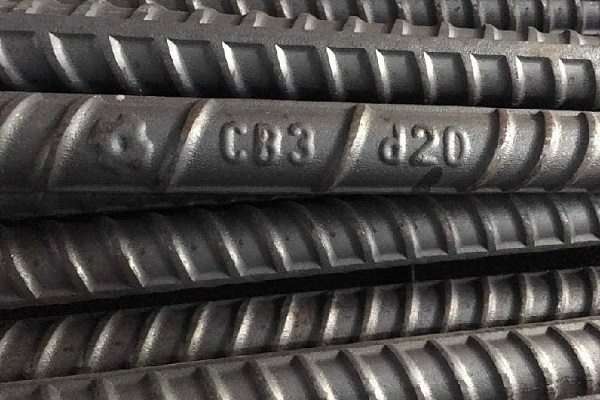
Steel grade CB300 is used for small construction projects
For large buildings and projects over 7 floors high, it is recommended to use a higher-strength steel grade, such as CB400 or SD390. Even higher-strength steel can be used, such as CB500 or SD490.
However, choosing the type of steel depends greatly on the design of the project, so for each different item, we may need different types of steel.
MRS Steel - Steel supplier with quality steel grades
When it comes to construction or manufacturing, steel quality plays an important role in ensuring the safety and durability of the project. Therefore, to avoid choosing the wrong type of floating, poor-quality steel, the best way is to buy steel produced by reputable brands. On the other hand, choosing branded steel also ensures you buy at the right price and quality commensurate with the cost.
Currently, MRS Steel is one of the steel suppliers with quality steel grades that meet international standards. With a team of experienced and creative staff, we are determined to carry out our mission of providing customers with good-quality products, good prices, and quick response times, bringing many benefits to customers. If you need to buy steel from brands such as Hoa Phat, Formosa, Pomina, TVP,.. please contact us.
In the above article, MRS Steel has brought you useful information about steel grades and common types of steel grades today. Follow MRS Steel for more necessary information about the steel industry.

